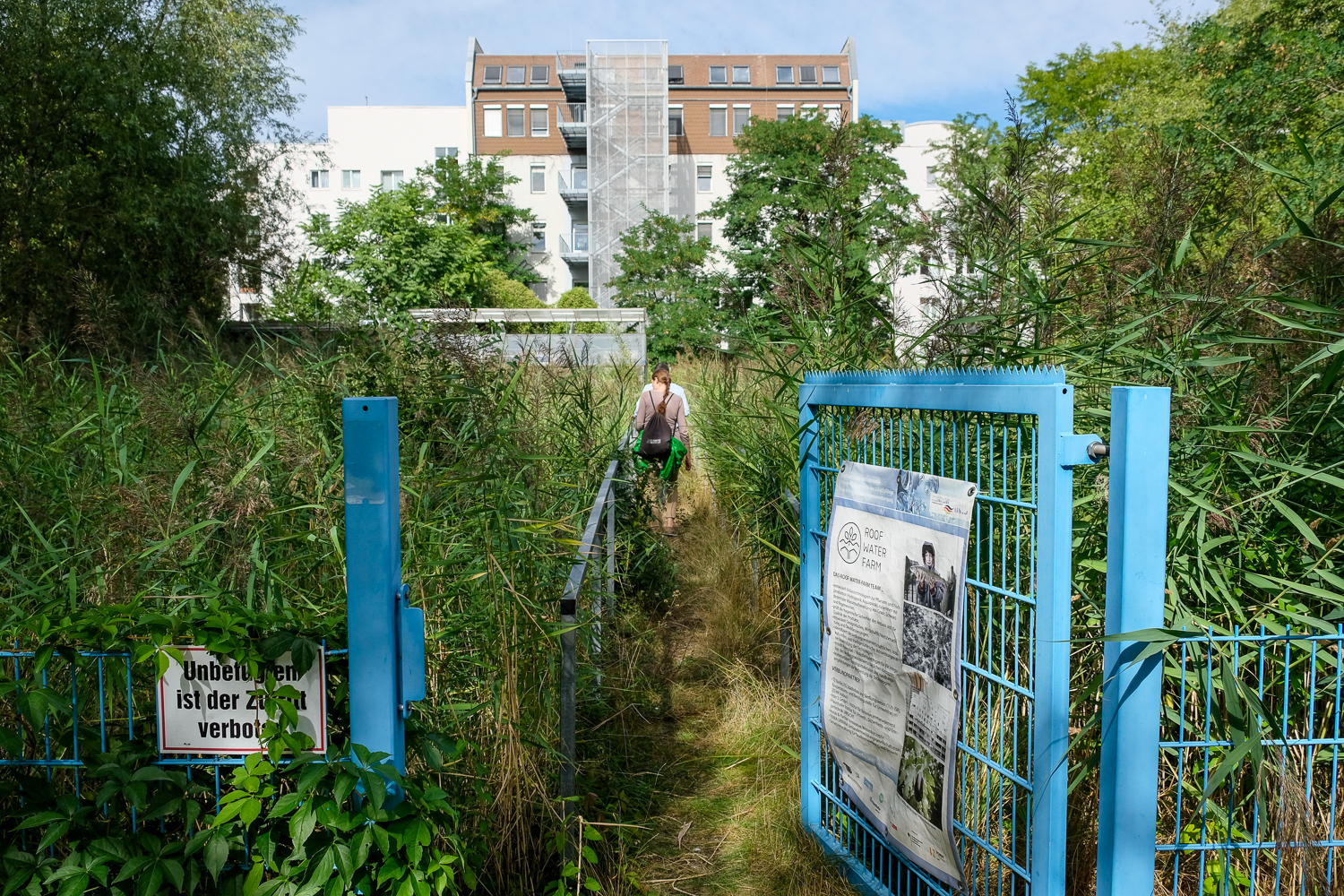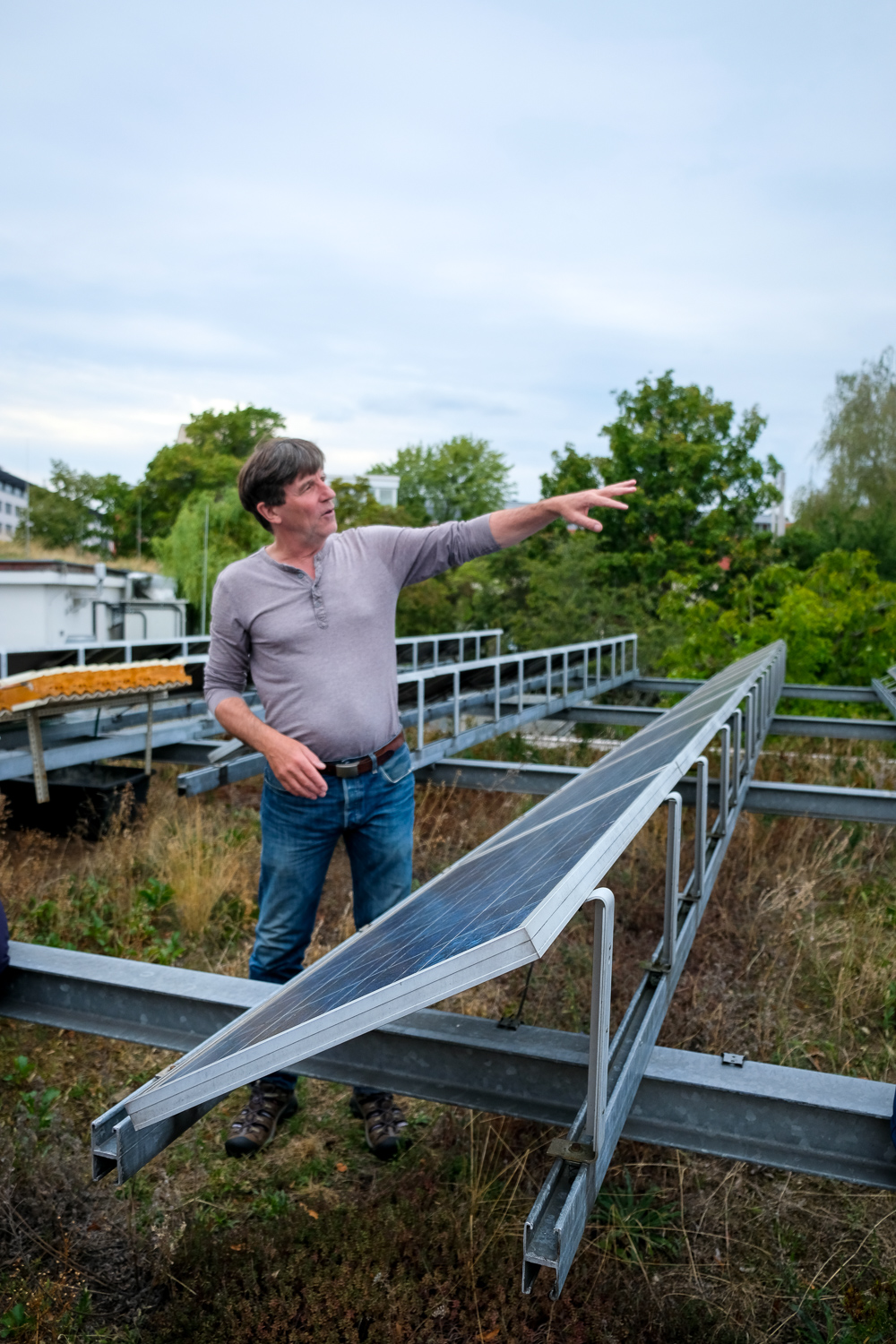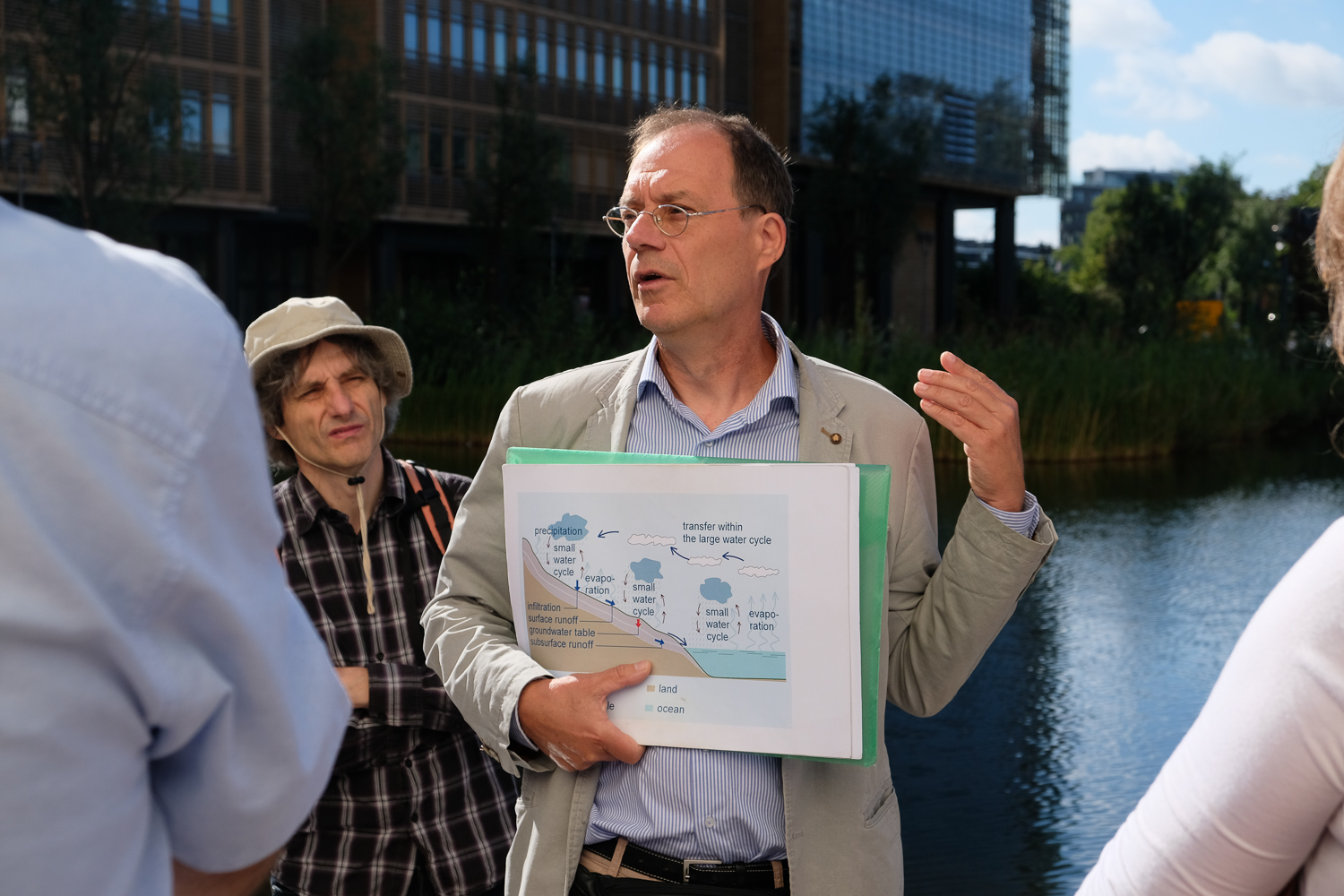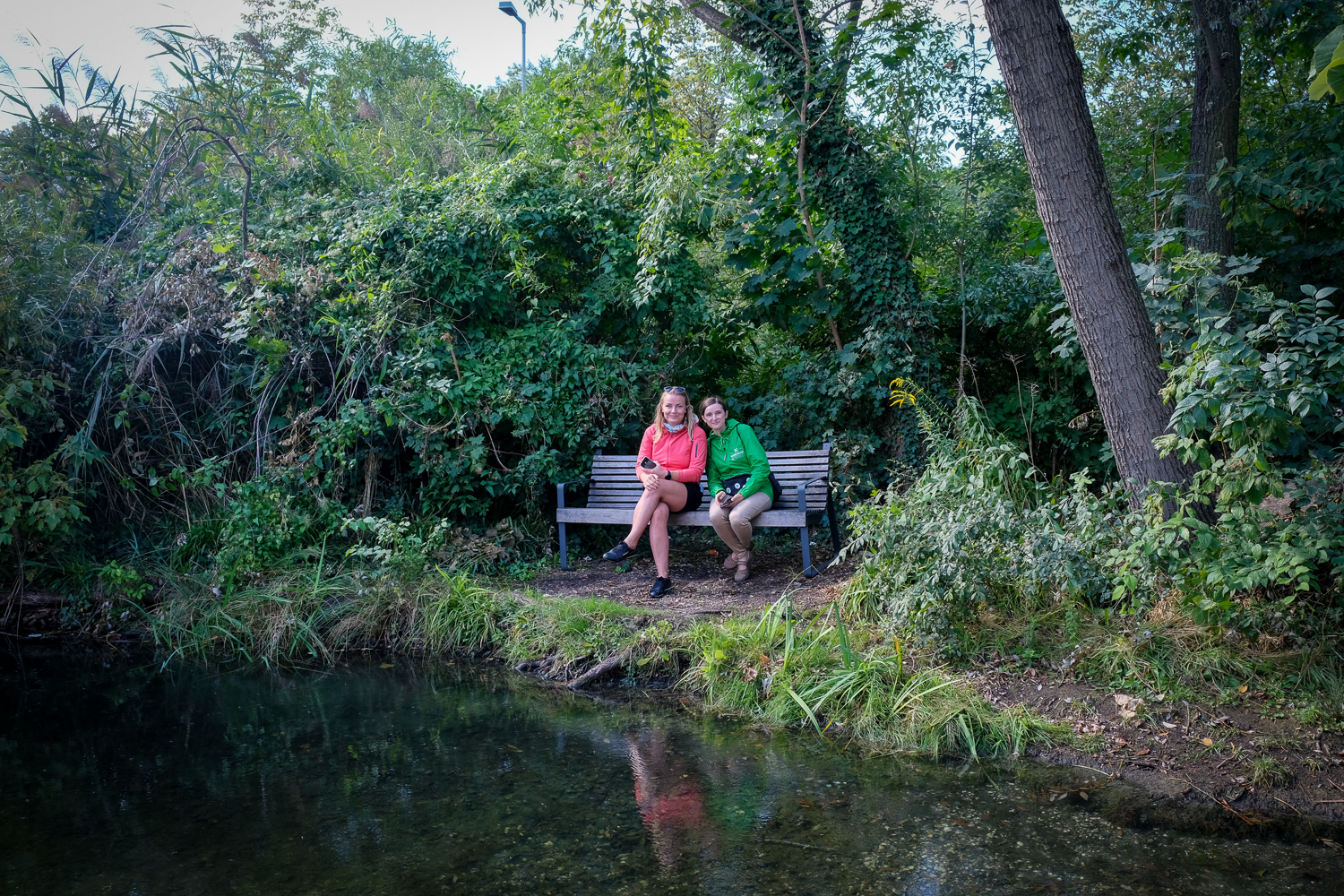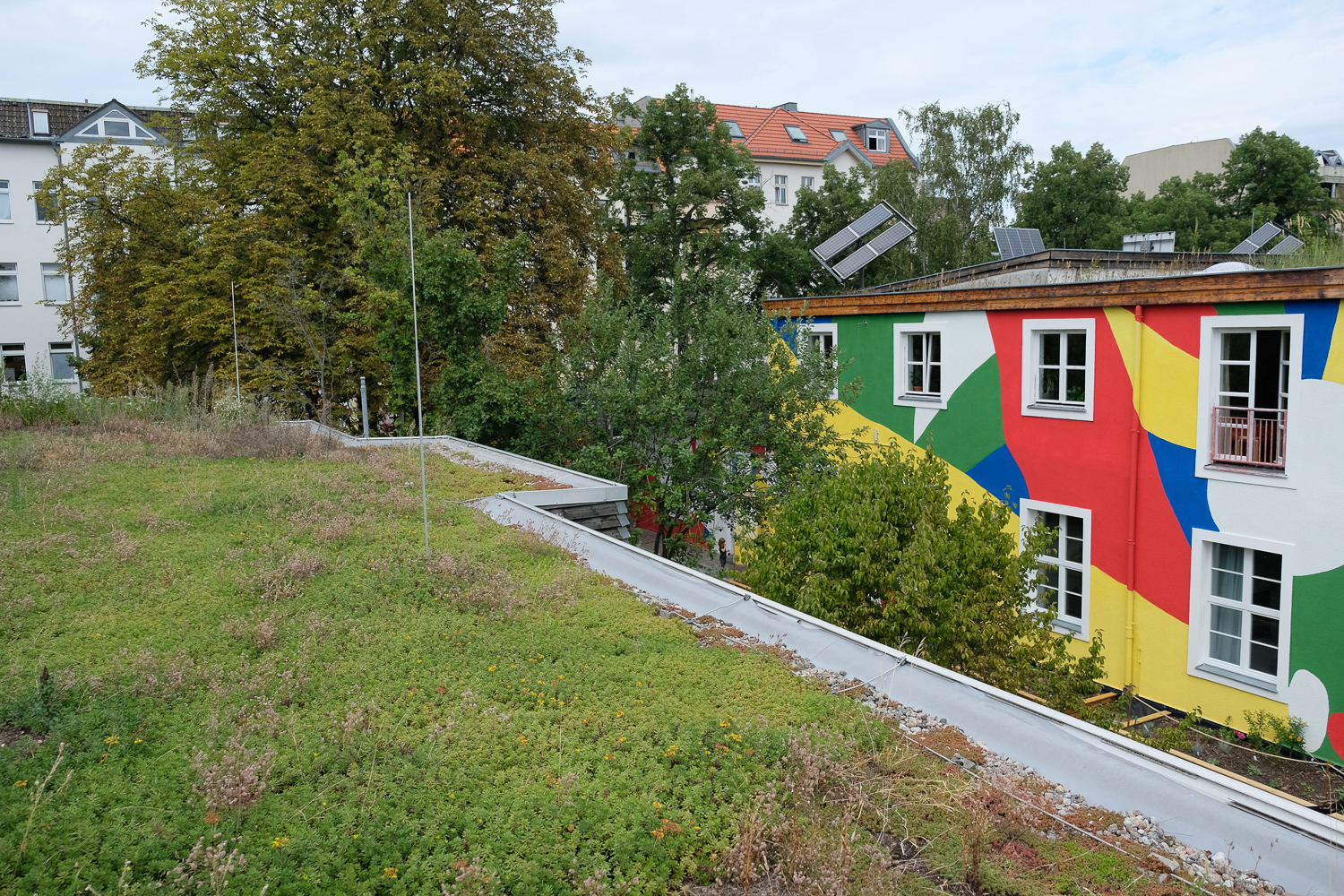Online conference: Blue and green infrastructure for urban climate change mitigation
The event was addressed to city officials, local government employees, planners, designers and landscape architects actually involved in the management of greenery, rainwater management and development of blue-green-infrastructure in cities.
The online conference, broadcasted live from the studio was watched by 252 people. Participants had the opportunity to ask questions in a chat. The interactive online workshops brought together 42 participants and were conducted in three small groups using the Zoom platform and the Mural interactive online whiteboard.

Online conference: plenary session
The first panel started with a presentation “Good Practices from Germany as an inspiration for Polish local-governments: presentation of innovative nature-based solutions from Berlin”, conducted by Ewa Iwaszuk from Ecologic Institute. It served as a starting point for a discussion with study visit participants: Jacek Kisiel (City of Warsaw) and Bożena Zając (City of Mysłowice), moderated by Tomasz Bergier from the Sendzimir Foundation. The panelists shared their observations from the visit and perspectives for the introduction of similar solutions in Polish cities.
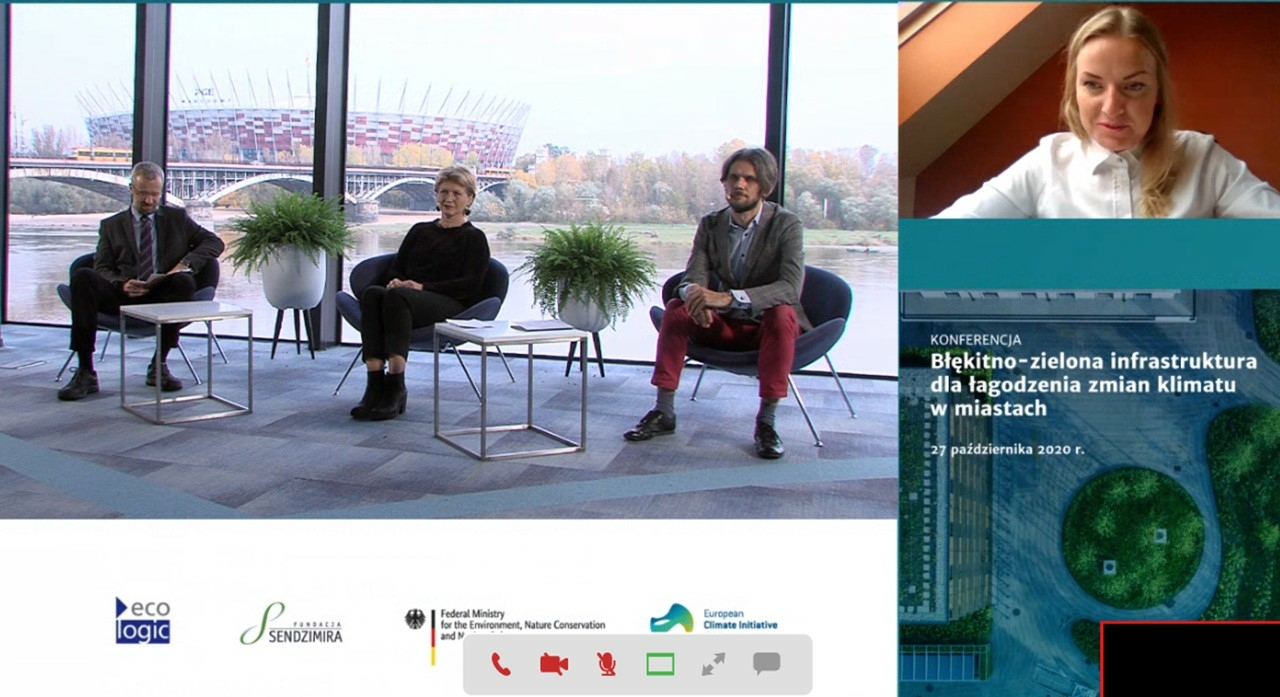
The next item on the agenda was a discussion on the experiences of transferring solutions from abroad to Poland, using the example of the Biotope Area Factor (BAF) from Berlin, conducted by Ilona Gosk with urban planner Agnieszka Kowalewska. During the discussion, the provisions of Polish law, which limit the introduction of similar solutions in local land use plans, were discussed.
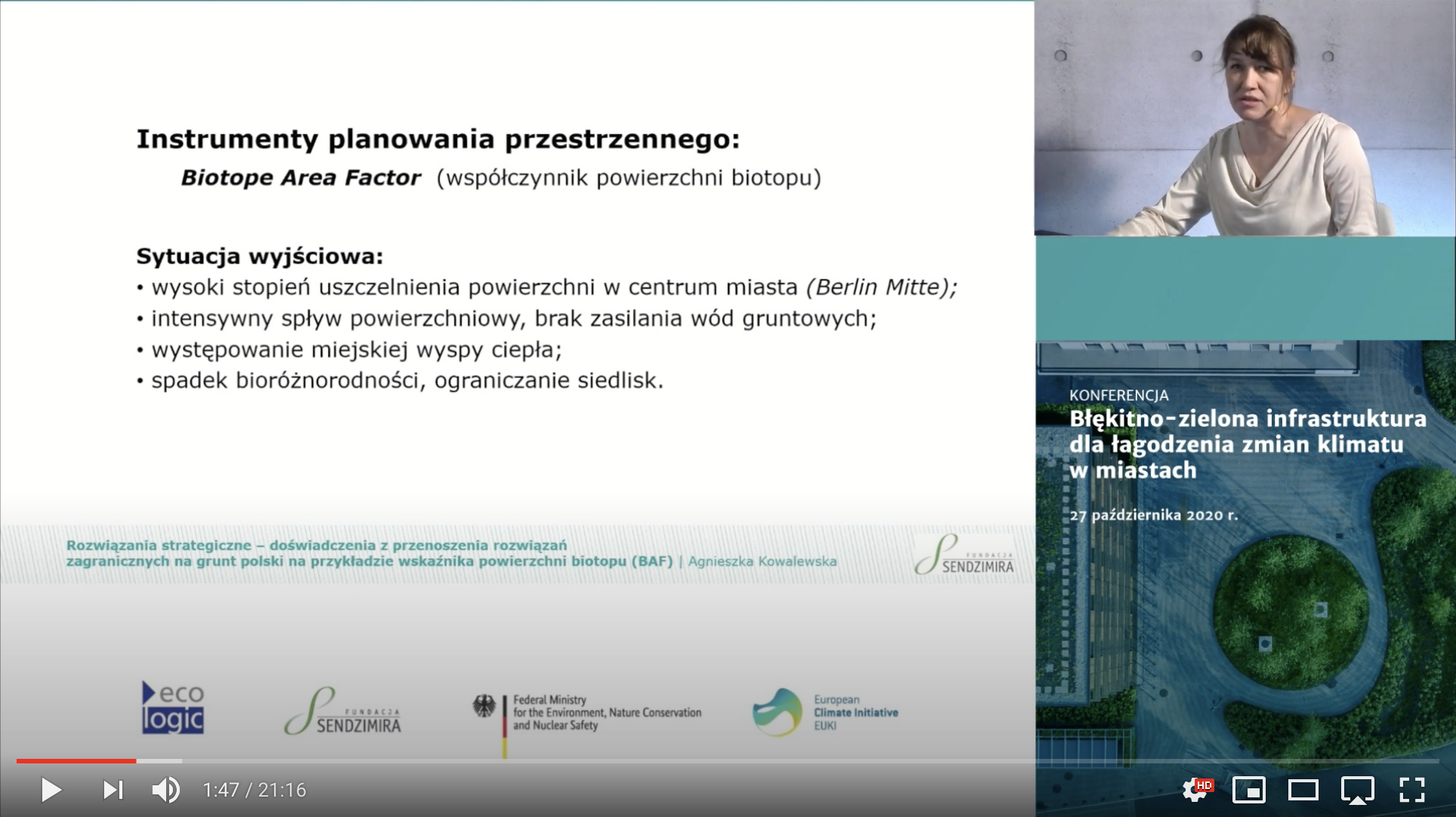
The last panel presented the results of technical trainings, during which planners and designers developed concepts of specific blue and green infrastructure investments for the cities hosting the trainings. The panel opened with presentations of sample studies from Warsaw, Krakow and Gdynia. Tomasz Bergier, who led this part of the conference, discussed with the guests sitting in the panel: Łukasz Pawlik (Krakow) and Jacek Wiśnicki (Warsaw), who discussed the prospects of implementing the developed concepts. Other investments in nature-based solutions undertaken by cities were also discussed.
At the end of the conference, Ilona Gosk reminded the participants that we all face the challenge of implementing the European Green Deal. She expressed the hope that the presented inspirations will allow the conference participants to take better actions to adapt cities to climate change, achieve climate neutrality, and that the presented cooperation mechanisms will allow the effective use of external funds.
The recording of the online conference is available on YouTube (in Polish).
Interactive workshops
Thursday’s workshop was an extension of the discussions started during the conference. Small groups and use of cutting edge software allowed for interactive discussion and exchange of experience.
The workshop entitled “Cooperation of designers and officials in the implementation of green and blue infrastructure solutions” was conducted by Agnieszka Czachowska and Karolina Maliszewska from the Sendzimir Foundation. During the workshop, the readiness of cities for the implementation of nature-based solutions was discussed and the main difficulties encountered by municipal staff in the process of commissioning, supervising and using blue-green infrastructure facilities were identified. The participants searched for solutions to help implement pilot projects in line with the expectations of cities and designers.
The participants of the second workshop, conducted by Ewa Iwaszuk from the Ecologic Institute and Tomasz Bergier from the Sendzimir Foundation, entitled “How to implement comprehensive and multifunctional blue and green infrastructure systems in Polish cities”, wished there was more time to discuss all the issues raised in the workshop. The participants reported the need for further work on recommendations on how to adapt foreign solutions to Polish realities.
The last workshop entitled “Adaptation of local law solutions from abroad to promote the development of nature-based solutions to Polish conditions” was conducted by Ilona Gosk from the Sendzimir Foundation and urban planner – Agnieszka Kowalewska. During the workshop, participants discussed the conditions that must be met in order to successfully adapt solutions from abroad to the reality of Polish cities. A map of Polish good practices, submitted by the training participants, was also created.

Conference materials
The conference was held in Polish. Recordings from individual panels and presentations of the speakers are available on this website.

